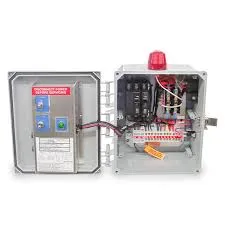Understanding Weatherstrip Seals Essential Elements for Energy Efficiency and Comfort
Weatherstrip seals, often overlooked in both commercial and residential buildings, play a crucial role in energy efficiency and environmental comfort. These seals are designed to prevent air leakage around doors and windows, helping to maintain a stable internal climate while reducing energy costs. In this article, we will explore the various types of weatherstrip seals, their applications, benefits, and maintenance tips to ensure they perform effectively.
What are Weatherstrip Seals?
Weatherstrip seals are materials that provide insulation and protect against drafts, moisture, and pests. They can be made from a variety of materials, including rubber, foam, vinyl, and metal. The primary purpose of these seals is to fill gaps between stationary and movable components, ensuring a tight seal when doors and windows are closed. This simple yet effective solution is essential in enhancing the energy efficiency of buildings.
Types of Weatherstrip Seals
There are several types of weatherstrip seals, each suitable for different applications
1. Foam Weatherstripping Made from closed-cell foam, this type is easy to install and is often used for irregular or shaped gaps. It is affordable and provides a decent level of insulation.
2. V-Seal Weatherstripping This option has a unique V-shaped design that applies pressure against the surface it seals. It is particularly effective for double-hung or sliding windows and can adapt to different gap sizes.
3. Rubber Weatherstripping Known for its durability and effectiveness, rubber weatherstripping is best for exterior doors. It provides excellent resistance against the elements and serves well in maintaining temperature control.
4. Magnetic Weatherstripping Often found in refrigerator doors, this type uses magnetic strips to create a strong seal. It provides superior insulation and is easy to use, making it ideal for easily accessible doors.
5. Door Sweeps While not traditional weatherstripping, door sweeps are essential for sealing gaps at the bottom of doors. They come in various materials, providing enhanced protection from drafts, insects, and moisture.
Benefits of Using Weatherstrip Seals
Incorporating weatherstrip seals into a building has a multitude of benefits
weatherstrip seal

- Energy Efficiency Properly installed weatherstrip seals can significantly reduce heating and cooling costs by keeping conditioned air inside and outside air from infiltrating the building.
- Enhanced Comfort By minimizing drafts and maintaining a consistent temperature, weatherstrip seals contribute to a more comfortable indoor environment.
- Moisture Control Weatherstrip seals help reduce the risk of moisture intrusion, which can lead to mold and structural damage.
- Noise Reduction The insulation properties of weatherstrip seals can also help dampen outside noise, creating a quieter living or working space.
Maintenance and Installation Tips
To ensure that weatherstrip seals work effectively, regular maintenance is key. Here are some tips
- Inspect Regularly Periodically check the seals for wear and tear. Look for cracks, gaps, or loss of elasticity.
- Clean the Surfaces Dust and debris can accumulate and affect the seal's performance. Clean surfaces before applying new weatherstripping.
- Replace When Necessary If the weatherstripping has degraded or is not sealing properly, it’s important to replace it. This can be a do-it-yourself task, as most weatherstripping comes with simple installation instructions.
- Choose the Right Material Consider the specific needs of your environment. For instance, areas with extreme temperatures may benefit from more durable materials.
Conclusion
Weatherstrip seals are an often underappreciated yet critical component of effective building insulation. By understanding their types, benefits, and maintenance, homeowners and businesses can make informed decisions that enhance energy efficiency and comfort. Investing in quality weatherstripping not only contributes to significant cost savings but also protects your home from the elements, ensuring a cozy sanctuary year-round.
-
XIANGFAN Rubber Tape-Ultimate Solutions for All Your Insulation NeedsNewsJun.24,2025
-
XIANGFAN Rubber Tape-Protection for Industrial and Residential ApplicationsNewsJun.24,2025
-
XIANGFAN Rubber Tape: Superior Safety and Sealing for Demanding EnvironmentsNewsJun.24,2025
-
XIANGFAN Rubber Tape: Reliable Solutions for Every Electrical ChallengeNewsJun.24,2025
-
XIANGFAN Electrical & Industrial Tape: Powering Reliability Across IndustriesNewsJun.24,2025
-
XIANGFAN Electrical & Industrial Tape: Excellence in Every ApplicationNewsJun.24,2025
